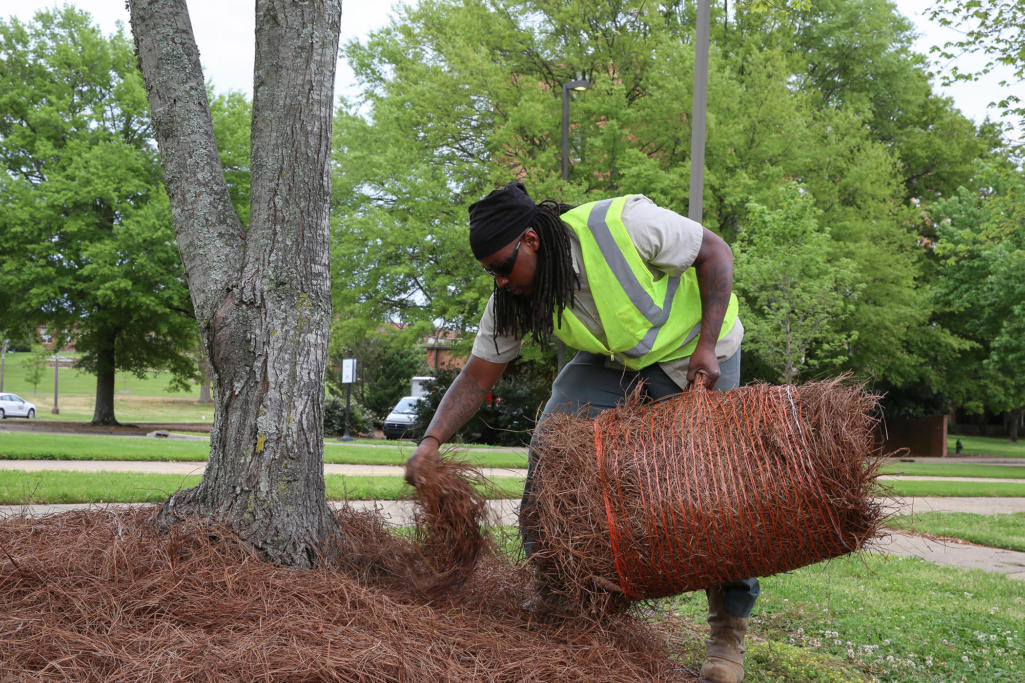
Mulch is one of the most beneficial, yet most misunderstood practice in the landscape. For me, the best types are bark or straw, which can break down quickly to build your soil. Properly applied mulch seeks to provide 2-3” of cover in the drip zone of the plant. It is important to keep the mulch clear of the trunk. Piling it up around the trunk encourages disease, pine voles, and insects which can damage the thin bark. I know it seems expensive, but the mulch breaks down so quickly because our soils are deficient in organic matter. The mulch breaking down is a valuable tool for those of us with a
green thumb.

The first question people will ask is about painted wood chips or wood chips. I’m not a big fan, mainly because they don’t build the soil, and they take nitrogen away from the plants. In some established situations, maybe they’re OK, because you don’t want growth? That’s up to you. The same goes for gravel and rubber mulches. They do suppress weeds, but they’re not going to really help the plant. True organic mulches that break down provide the plant with nutrition, cooler root zones, and moisture.
The next question comes in regards to using weed block fabrics and plastic. Though they do prevent weeds temporarily, once some organic matter breaks down on top of the plastic, you’ll have weeds anyways. You’ll also find that some weeds like nut grass can punch up through the weed barriers anyways. I’d rather see you spend your money elsewhere if possible. For more information, check out this publication from our friends next door at Clemson.







